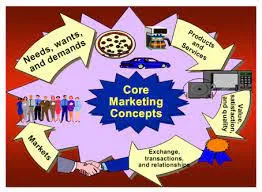The second set of forces that make marketing an endlessly changing activity is put in motion by individual enterprises when they make continual adjustments in the control able marketing factors. These forces are known as the marketing mix.

Though there are a multitude of these controllable variables, Jerome McCarthy has popularised a four-factor classification, now commonly known as the 4Ps: Product, Place, Promotion, and Price.
Definitionally, marketing mix is the mixture of controllable marketing variables that the firm uses to pursue the sought levels of sales in the target market.
The 4Ps give the marketing manager a framework within which he can operate on a costeffective manner. His eventual success will be determined by the wisdom of his choices, his ability to modify his mix in the face of uncertainty and change, and his determination to make his strategy work.
Table of Contents
Product
Under the first P, which stands for the product, the company takes care ofall the problems ofdeveloping the product or service which it plans to offer to the target market.
Such problems include:
(i) selecting a product or product lines;
(ii) adding or dropping items in the product line;
( i i i ) branding ;
( iv)packaging; and
In a nutshell, the product area is concerned with developing the right product to the target market.
A product (or a service) is not of any use to the consumer if it is not available when and where he wants it. Therefore, the company must consider where, when, how and by whom the goods and services are to be offered for sale. Sometimes, for example, complicated channels of distribution are necessary, while at the times, very simple methods can be used effectively. Wholesaling, retailing, transportation, and storage play a part in the distribution of most goods and services.
Place
The second P (for place) is concerned with all problems, functions and institutions involved in getting the right product to the target market.
Promotion
The third P (for promotion) has to do with the methods of communicating to the target market, the “right product” that will be sold in the “right place” and the “price”. Here, all the problems of sales promotion, advertising and the development, training, and utilization of a sales force are usual y covered. Advertising, sales promotion and personal selling are to be considered as complementary methods of communicating with customers.
While the marketing manager is developing the “right” product, place, and promotion, he must also decide on the “right” price, i.e the one which will make his total marketing mix attractive. Before setting the price, the marketing manager considers the nature of competition in his target market, as well as the existing practices on mark-ups, discounts, and terms of trade. In some instances, he must also consider legal restrictions affecting prices. In summary, price is concerned with determining the “right price” to move the “right product” to the “right place” with the “right promotion” for the target market.
By varying each of these controllable marketing variables, a marketing mi can be selected from a great number of possibilities. Though this framework may appear simple, the task of making choices within it is fairly cumbersome. For instance, each of these four control able marketing variables has man–, potential variations, thereby making the number of possible marketing mixes very large. Let us assume that there are five (5) variations of each of the variables (i.e 5 products, 5 places, 5 promotions and 5 different prices), there would be 625 possible different marketing mixes!. And, it could be more. Hence, as the number of variations increases the number of possible mixes which must be considered by the marketing manager increases geometrically.
We must stress here that no human mind is quite capable of currently evaluating all the possible marketing mixes. What is practicable is a progressive elimination of the least desirable, such that the problem can be reduced to manageable proportions.
Generally, there is only one “best” strategy at any given time. However, since conditions, often change in the market situations; there may be many good ones. Even then, a good strategy will need to be altered as consumer behaviour, competitors’ behaviour, and other non-controlable variable change.
CONCLUSION
You have learned in this unit that environmental forces influence an organisational marketing. The marketing environment presents an unending series of opportunities and threats. The major responsibility for identifying changes in the macro-environment falls to a company’s marketer. Environmental scanning and analysis are particularly important here.


